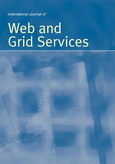
International Journal of Web and Grid Services
Scope & Guideline
Pioneering research in distributed systems and services.
Introduction
Aims and Scopes
- Web Services and Architectures:
The journal emphasizes research on web services, including their design, architecture, and deployment. This includes discussions on RESTful APIs, microservices, and service-oriented architectures. - Grid and Cloud Computing:
Research articles often explore grid and cloud computing paradigms, focusing on resource management, scheduling, and optimization techniques to enhance performance and scalability. - Internet of Things (IoT) Integration:
A significant research area involves the integration of IoT technologies with web and grid services, addressing challenges such as data management, security, and real-time processing. - Machine Learning and AI Applications:
The journal highlights the application of machine learning and artificial intelligence in improving web services and grid computing, including predictive analytics and intelligent resource management. - Security and Privacy in Web Services:
Security is a critical focus area, with papers addressing issues such as data protection, access control, and the implementation of secure protocols in web and grid environments. - Performance Optimization Techniques:
The journal explores various optimization techniques aimed at improving the performance of web and grid services, including load balancing, energy efficiency, and QoS (Quality of Service) management.
Trending and Emerging
- Edge Computing:
Research on edge computing has surged, driven by the need for real-time processing and reduced latency in IoT applications, showcasing innovative solutions for resource management at the edge. - Blockchain Technology:
Blockchain applications in various domains, particularly for enhancing security and transparency in web services and IoT architectures, have become a prominent theme in recent publications. - Reinforcement Learning and AI Techniques:
The application of reinforcement learning and other AI methodologies in enhancing web navigation, service recommendations, and dynamic resource allocation has gained significant attention. - Energy-Efficient Algorithms:
There is an increasing focus on developing energy-efficient algorithms for cloud and edge computing, reflecting a broader trend towards sustainability and green computing practices. - Data Privacy and Security Innovations:
Emerging frameworks and models for data privacy and security, particularly in the context of IoT and cloud environments, have become critical themes as concerns over data breaches grow.
Declining or Waning
- Traditional Grid Computing:
Research focused specifically on traditional grid computing has decreased, as the field shifts towards more integrated approaches that combine grid computing with cloud and edge computing technologies. - Static Networking Protocols:
The exploration of static networking protocols appears to be waning, as newer, more dynamic solutions that adapt to changing network conditions gain traction. - Basic Data Management Systems:
The focus on fundamental data management systems without integration of advanced technologies like AI or IoT has seen a decline, as researchers gravitate towards more innovative and complex solutions. - Legacy Security Models:
There is a noticeable decrease in publications centered on legacy security models that do not incorporate modern challenges posed by IoT and cloud environments, signaling a shift towards contemporary security frameworks.
Similar Journals
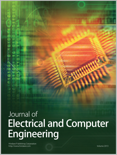
Journal of Electrical and Computer Engineering
Advancing Innovation in Electrical and Computer EngineeringJournal of Electrical and Computer Engineering is a premier open-access journal published by HINDAWI LTD, dedicated to advancing the fields of electrical and computer engineering. With an ISSN of 2090-0147 and an E-ISSN of 2090-0155, this journal has been providing a platform for cutting-edge research since its inception in 2007. Based in the United States, it operates from its address at ADAM HOUSE, 3RD FLR, 1 FITZROY SQ, LONDON W1T 5HF, ENGLAND. The journal has established itself with a healthy impact factor, classified in the 2023 Q2 quartile for both Computer Science (Miscellaneous) and Electrical and Electronic Engineering, demonstrating its growing influence in the academic community. Additionally, its ranking positions it within the 67th percentile in General Computer Science and the 61st percentile in Electrical and Electronic Engineering on Scopus, indicating its significant contribution to these fields. Covering an extensive scope from 2010 to 2024, the journal seeks to publish innovative research articles, reviews, and case studies that explore new techniques and applications in electrical and computer engineering, benefiting a wide audience of researchers, professionals, and students focused on these rapidly-evolving areas.

International Journal of Grid and Utility Computing
Pioneering Innovations in Grid and Utility ComputingInternational Journal of Grid and Utility Computing is a pioneering publication dedicated to advancing research in the domains of grid computing, utility computing, and their applications across various sectors. Initiated in 2005 and continuing through 2024, the journal is published by INDERSCIENCE ENTERPRISES LTD, a respected publisher known for its commitment to facilitating scholarly communication. With an ISSN of 1741-847X and an E-ISSN of 1741-8488, this journal, based in the United Kingdom, serves a global audience of researchers, professionals, and students. Although classified in the Q4 category across Applied Mathematics, Computer Science Applications, and Management Information Systems, the journal aims to bridge theoretical research with practical implementation, fostering interdisciplinary collaborations. Researchers looking for a platform to disseminate their work on grid technology and its utility in modern computing environments will find this journal an invaluable resource. The focus on innovative computing methodologies places it at the forefront of emerging trends and technology applications, despite the need for increased visibility in competitive metrics like Scopus rankings.
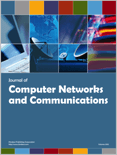
Journal of Computer Networks and Communications
Exploring the Future of Communications TechnologyThe Journal of Computer Networks and Communications is a premier open-access journal published by HINDAWI LTD, dedicated to advancing the field of computer networks and communications. With an ISSN of 2090-7141 and an E-ISSN of 2090-715X, this journal has been accessible to researchers since its inception in 2011, promoting widespread dissemination of knowledge in this rapidly evolving discipline. Based in Egypt, the journal's editorial standards are upheld through a rigorous peer-review process, contributing to its strong academic reputation. As of 2023, it holds a commendable Q2 ranking in Computer Networks and Communications and a Q3 ranking in Information Systems within its category quartiles. According to Scopus rankings, it occupies the 141st and 143rd positions in its respective fields, showcasing its relevance and influence in the academic community. The journal's mission is to publish high-quality research that addresses contemporary challenges in networking technologies and systems, making it an essential resource for researchers, professionals, and students seeking to innovate and excel in these fields.

IEEE Internet of Things Journal
Pioneering Research in Connected SystemsWelcome to the IEEE Internet of Things Journal, a leading publication in the field of connected systems and smart technologies. Published by the IEEE - Institute of Electrical and Electronics Engineers Inc, this journal is dedicated to disseminating cutting-edge research and innovative developments in the Internet of Things (IoT) domain. With an impressive impact factor and recognized as a Q1 journal across multiple categories such as Computer Networks and Communications, Information Systems, and Signal Processing, the IEEE Internet of Things Journal serves as an essential resource for researchers, industry professionals, and students looking to advance their knowledge and contribute to this rapidly evolving field. Since its inception in 2014, the journal has steadily risen to prominence, ranking impressively in Scopus metrics with top positions in key categories, ensuring high visibility and credibility in the academic community. We invite you to explore the rich array of articles and access options available to support your research endeavors in one of the most transformative areas of technology today.

International Journal of Web Services Research
Elevating Standards in Web Services ResearchThe International Journal of Web Services Research, published by IGI Global, is a premier forum dedicated to advancing research and innovation in the field of web services. With an ISSN of 1545-7362 and an E-ISSN of 1546-5004, this journal has steadily contributed to the discourse on computer networks, information systems, and software development since its inception in 2004. Based in the United States, the journal publishes high-quality research articles that delve into cutting-edge web service technologies and methodologies, making it an invaluable resource for researchers, professionals, and students alike. Although categorized in the Q4 quartile in 2023 across several classifications, its growing impact and relevance are reflected in its ongoing engagement with contemporary issues in the web services landscape. As an academic platform, it aims to provide a comprehensive understanding of the dynamics of web services and their implications for future technological advancements. Researchers are encouraged to contribute their findings to foster knowledge sharing and collaboration within this vital domain.

Ad Hoc & Sensor Wireless Networks
Pioneering discoveries in wireless technology and engineering.Ad Hoc & Sensor Wireless Networks, an esteemed journal published by OLD CITY PUBLISHING INC, provides a dedicated platform for the dissemination of pioneering research in the realms of computer science, electrical and electronic engineering, and instrumentation. With an ISSN of 1551-9899 and an E-ISSN of 1552-0633, this journal has established itself as a crucial resource for scholars and practitioners alike, actively contributing to the advancements in ad hoc networks and wireless sensor technologies. It holds a commendable position within the third quartile in its respective fields, with Scopus rankings reflecting its relevance in the academic community. As a publicly accessible source of valuable insights, the journal aims to inspire innovation and facilitate progress across various disciplines. Situated in Philadelphia, PA, and converging its efforts from 2005 to 2024, Ad Hoc & Sensor Wireless Networks continues to be a beacon of research excellence, impacting both theoretical and practical domains in technology.
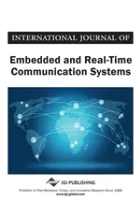
International Journal of Embedded and Real-Time Communication Systems (IJERTCS)
Innovative Insights into Real-Time Communication SystemsInternational Journal of Embedded and Real-Time Communication Systems (IJERTCS), published by IGI Global, stands at the forefront of research in the domain of communication systems that operate on embedded and real-time frameworks. With its ISSN 1947-3176 and E-ISSN 1947-3184, this peer-reviewed journal has been a crucial platform for disseminating groundbreaking research and practical applications from 2010 to 2023. Although currently categorized in the Q4 quartile of computer science in Scopus, the journal offers unique insights into innovative communication strategies that bridge theoretical concepts with real-world implementation. Researchers, practitioners, and students alike rely on IJERTCS for comprehensive studies that address both contemporary challenges and future prospects in embedded systems. The journal enhances the academic discourse through highly relevant articles, supporting the development of robust communication technologies that are becoming increasingly vital in our interconnected world.
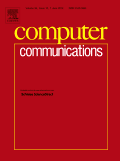
COMPUTER COMMUNICATIONS
Unveiling Insights in Cutting-Edge CommunicationsCOMPUTER COMMUNICATIONS is a premier journal published by Elsevier, covering cutting-edge research in the field of computer networks and communications. With an impressive 2023 Scopus ranking placing it in the 95th percentile and classified as Q1 in its category, this journal embodies the forefront of technological advancement and scholarly excellence. Since its inception in 1978 and poised to continue until 2024, COMPUTER COMMUNICATIONS serves as an essential platform for disseminating high-impact research that advances our understanding of computer networking protocols, architectures, and applications. Although it is not an open-access publication, the journal provides various access options to ensure that its findings are widely circulated among researchers, professionals, and students. Through rigorous peer review and a commitment to fostering innovation, COMPUTER COMMUNICATIONS plays a vital role in shaping the future of communication technologies.

JOURNAL OF HIGH SPEED NETWORKS
Shaping Tomorrow's Infrastructure Through Cutting-Edge StudiesJOURNAL OF HIGH SPEED NETWORKS, published by IOS PRESS in the Netherlands, serves as a vital platform for the dissemination of cutting-edge research in the fields of Computer Networks and Communications, Hardware and Architecture, and Information Systems. With an ISSN of 0926-6801 and an E-ISSN of 1875-8940, this journal has been integral to the academic community since its inception in 1992, providing a dedicated space for innovative studies and findings. Although categorized in the Q4 quartile in its various fields for 2023, the journal remains committed to advancing knowledge and fostering collaboration among researchers, professionals, and students alike. By offering insights into the complexities of high-speed networks and related technologies, the JOURNAL OF HIGH SPEED NETWORKS continues to play a significant role in shaping the future of digital communications and infrastructure. This journal does not operate as an open-access journal; however, it remains a key resource for professionals seeking to stay informed on the latest developments and trends in this fast-evolving discipline.
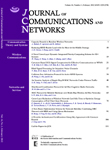
JOURNAL OF COMMUNICATIONS AND NETWORKS
Advancing the Frontiers of Communication and NetworkingJOURNAL OF COMMUNICATIONS AND NETWORKS, published by the Korean Institute of Communications Sciences (KICS), is a leading academic journal that has been at the forefront of the fields of Computer Networks and Communications as well as Information Systems since its inception in 1999. With a strong commitment to advancing research in these critical areas, this journal has achieved a prestigious Q1 ranking in both domains as of 2023, reflecting its significant impact and innovative contributions to the field. The journal features original research, review articles, and technical notes that address the latest advancements in communication technologies, network architecture, and data management strategies. As a vital resource for researchers, practitioners, and students, it not only disseminates valuable findings but also fosters collaboration and knowledge exchange among diverse disciplines within the communications landscape. With a consistent annual volume, the journal continues to shape the future of communications science and offers authors an esteemed platform to showcase their work.